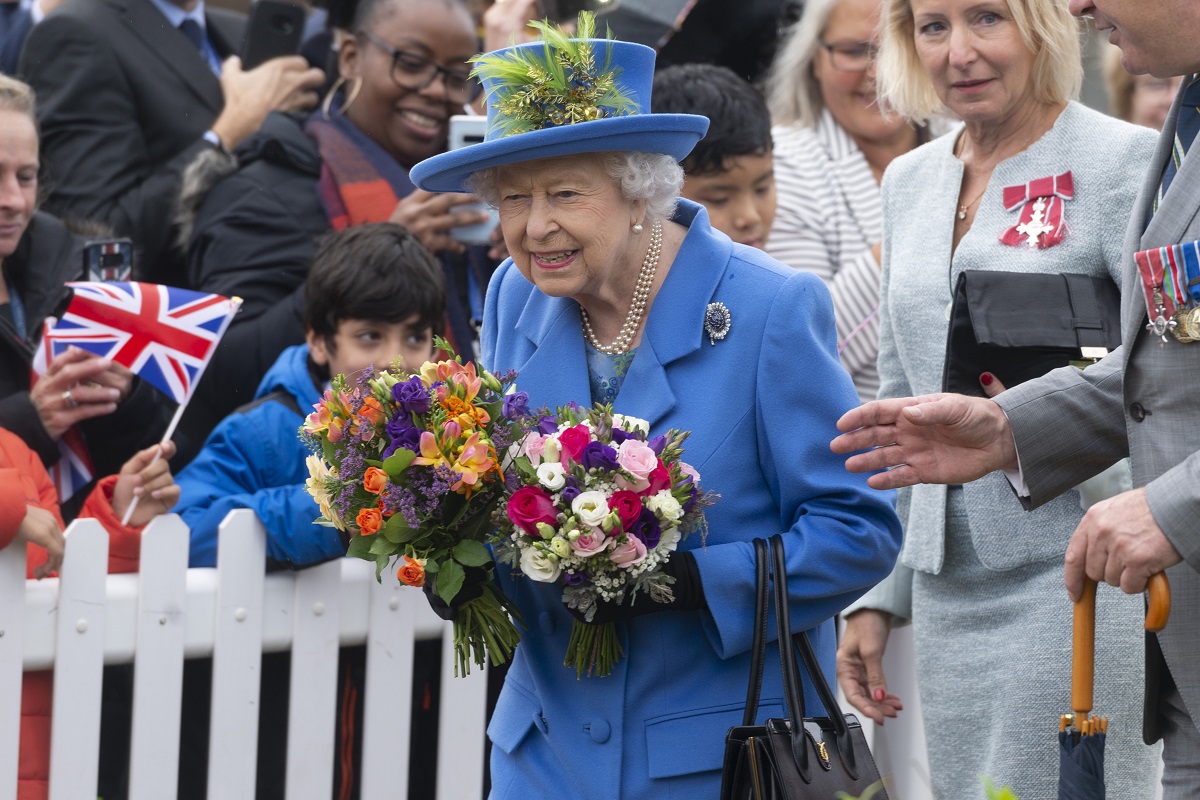New UK passports to bear ‘His Majesty’ title for the first time since 1952
British passports bearing the title of ‘His Majesty’ will start being issued this week in the name of King Charles III for the first time in 70 years.
The Queen’s relationship with India has centred on her visits there. There have been three official visits to India, in 1961, 1983 and 1997.

British Queen Elizabeth II (Photo: IANS)
Today is the Queen’s 96th Birthday, a reminder that she is both the oldest and longest-serving British monarch. In her special Platinum Jubilee year, it’s worth reflecting on the warm relationship she has enjoyed with India, the largest Commonwealth member, over the course of the 70 years of her reign. Of course, she became Queen after the death of her father King George VI in 1952, a mere five years after the birth of the modern State of India.
The 70-year span is a remarkable achievement. It’s comfortably the longest reign of any British Monarch going back to William the Conqueror in 1066. Indeed the Queen overtook the length of reign of her great great grandmother, Queen Victoria, in September 2015. Victoria reigned for 63 years and of course, was the “Empress of India”, though she never set foot in the country. Beyond the British Monarchy, it’s true that the King of Thailand celebrated his Platinum Jubilee in 2016, though sadly he died later that same year.
The Queen’s relationship with India has centred on her visits there. There have been three official visits to India, in 1961, 1983 and 1997. Her first visit was in 1959 when Jawaharlal Nehru welcomed her to the country, part of a long tour of the region which also took in Pakistan, Nepal and Iran. In India, the Queen accompanied by her husband the Duke of Edinburgh, visited Mumbai, Chen- nai, Jaipur, Agra and Kolkata. Highlights included being guest of hon- our at the Republic Day Parade, whilst the Maharaja of Jaipur even organised a tiger hunting session.
Advertisement
The Queen’s second visit was in 1983 when she met the then-PM, Indira Gandhi as well as presented Mother Theresa with an honorary Order of Merit. Most recently the Queen visited in 1997, to mark the 50th anniversary of India’s independence. This is not the first time she visited a country that had broken away from the British Empire, for example visiting the US in 1976, 200 years after the War of Independence. This visit to India was not without its controversies, with the Queen visiting Jallianwala Bagh in Amritsar to honour those who lost their lives in the massacre of 1919. The British Foreign Secretary, new into office, made some remarks on Kashmir, which were received badly prompting then Indian PM IK Gujral to blast the UK as a “third rate political power”.
The Queen has also hosted Indian leaders over the years visiting the UK, notably three Presidential Visits in 1963, 1990, and 2009. The most recent one was a three-day visit, in 2009, by President Pratibha Patil, who stayed at Windsor Castle. At the lavish State Banquet, attended by business and community leaders amongst others, the Queen said: “Prince Philip and I have fond memories of our own visits to India, and my family have been frequent guests of yours in recent years. The warmth and hospitality of the Indian people and the richness and diversity of India itself have been an inspiration to all of us.”
The Queen has met with Indian leaders on various other occasions, notably the Commonwealth Summits she has attended every two years since 1973. More recently, she has met PM Narendra Modi at last year’s G7 Summit in Cornwall and also on a visit to the UK in 2018. On that visit, the Queen gave him a crocheted, cotton lace that had been sent to her as a wedding present by Mahatma Gandhi. Over the course of the 70 years, the Queen has seen a lot; there have been 18 Indian PMs, which only goes to emphasise the monarch’s longevity.
The Queen’s positive engagement with India has also spread to her family members. Prince Charles has visited ten times, most recently in 2019. Meanwhile, her grandson Prince William went to India in 2016. Of course, her family members have an interesting history with India. Her ancestor, King George V attend- ed the Delhi Durbar in 1911 to celebrate his inauguration as Emperor of India. Of course, two years after its independence, India was one of the founding members of the Commonwealth in 1949 and the Queen has provided leadership to that organisation, which now spans 54 countries with an aggregate population of 2.4 billion. The Commonwealth often features in her messages and speech- es. In a special message released for the Platinum Jubilee, she reflected: “These last seven decades have seen extraordinary progress socially, technologically and culturally that have benefitted us all; and I am confident that the future will offer similar opportunities to us and especially to the younger generations in the United Kingdom and throughout the Commonwealth.”
An important component of the Queen’s relationship with India is the sizeable and vibrant Indian diaspora in the UK. Her engagement with this community has encompassed some memorable moments, such as her first visits to both a Hindu and a Sikh Temple in Britain, which took place in her Golden Jubilee in 2002. During her Diamond Jubilee ten years later, she visited a Hindu school in north London. The British Indian community are likely to throw themselves into this year’s Jubilee celebrations, lighting beacons, holding street parties and planting trees. The Queen may not be the Empress of India but she has impressed India and Indians, with her visits to and engagement with this wondrous country and its people.
(The writer is a Co-Founder of Integra Group, and worked at Buckingham Palace on the strategic communications of the Diamond Jubilee.)
Advertisement